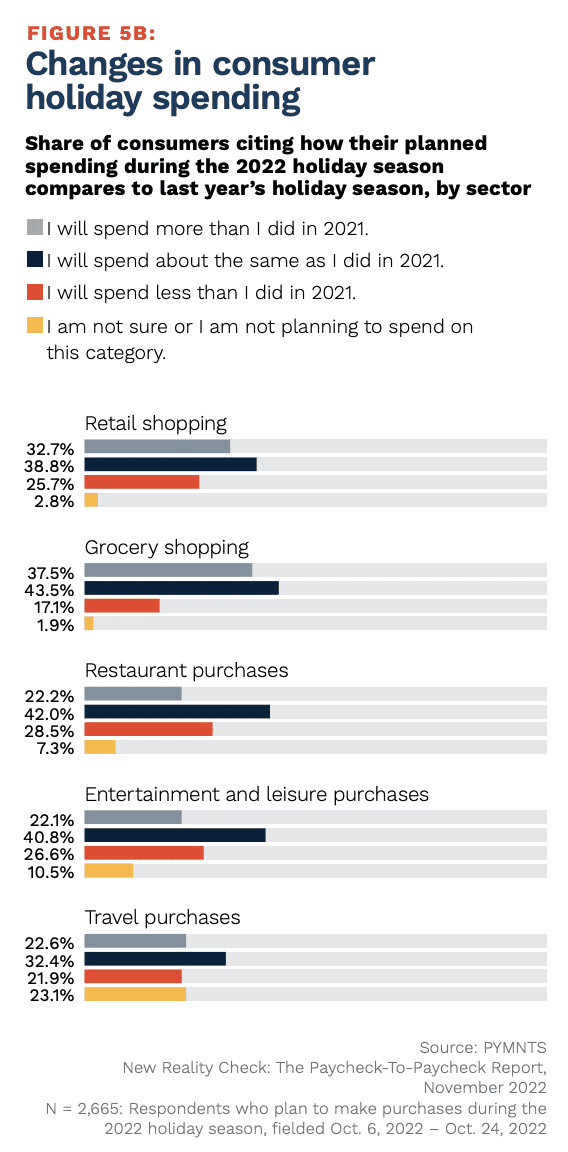
As inflation continues to rise, consumers are becoming more frugal in their holiday food spending, shifting away from dining out at restaurants towards more cost-effective grocery alternatives.
By the Numbers
Research from PYMNTS’ recent study “New Reality Check: The Paycheck-To-Paycheck Report — The Holiday Shopping Edition,” created in collaboration with LendingClub, finds that 38% of consumers expect to spend more on groceries this holiday season than they did in 2021. In contrast, only 22% said the same about restaurant purchases.

Meanwhile, only 26% reported that they expect to spend less on groceries, while a slightly higher 29% said they would spend less on restaurant dining this season.
The Data in Action
Some retailers are targeting their holiday spending with special product drops, noting consumers’ demand for at-home options. Take, for instance, Target, the country’s third-largest retail chain.
“Given that the gift-giving season is under way, and our guests are turning to Target more and more for their food and beverage needs, it’s an ideal time for our recently announced partnership with British retailer, Marks & Spencer, who’s collaborated with us to offer a limited-time assortment of gourmet premium food and chocolates that’s sure to be perfect gifting solution this holiday season,” Chief Growth Officer Christina Hennington told investors on a call Wednesday (Nov. 16) discussing the company’s third-quarter results.
Walmart, the world’s largest grocer, is also going after that holiday food spending.
“As you would expect, we’re helping families stretch their dollars as we head into the holidays,” CEO Doug McMillon told analysts on a call Tuesday (Nov. 15) discussing the company’s Q3 earnings. “The Walmart U.S. team has set the retail prices for a typical Thanksgiving meal the same as last year. We’re removing inflation on a basket of traditional Thanksgiving food items, including whole turkeys for under a dollar per pound.
For all PYMNTS retail coverage, subscribe to the daily Retail Newsletter.